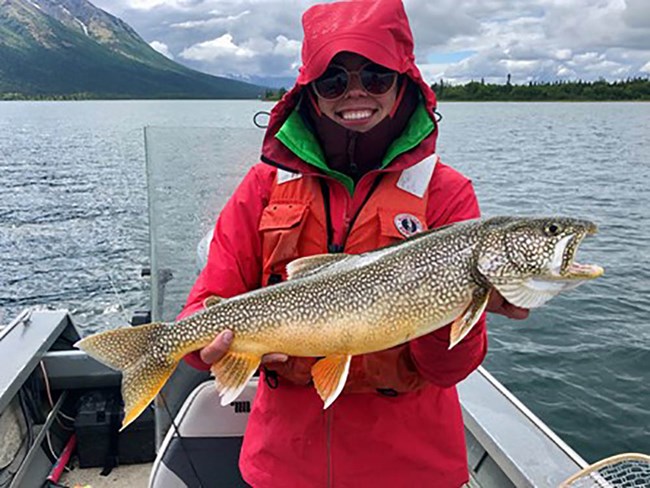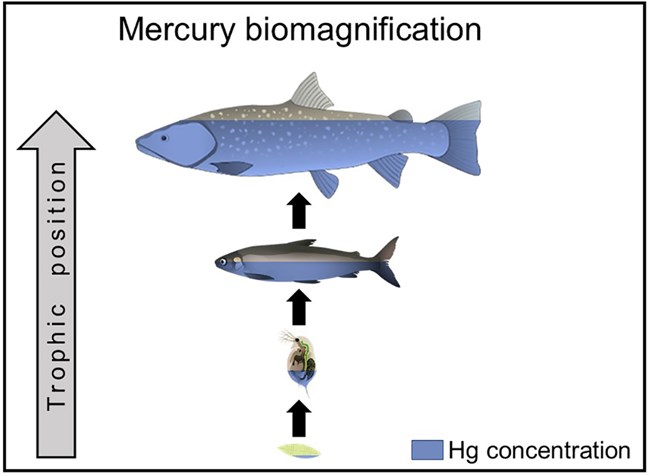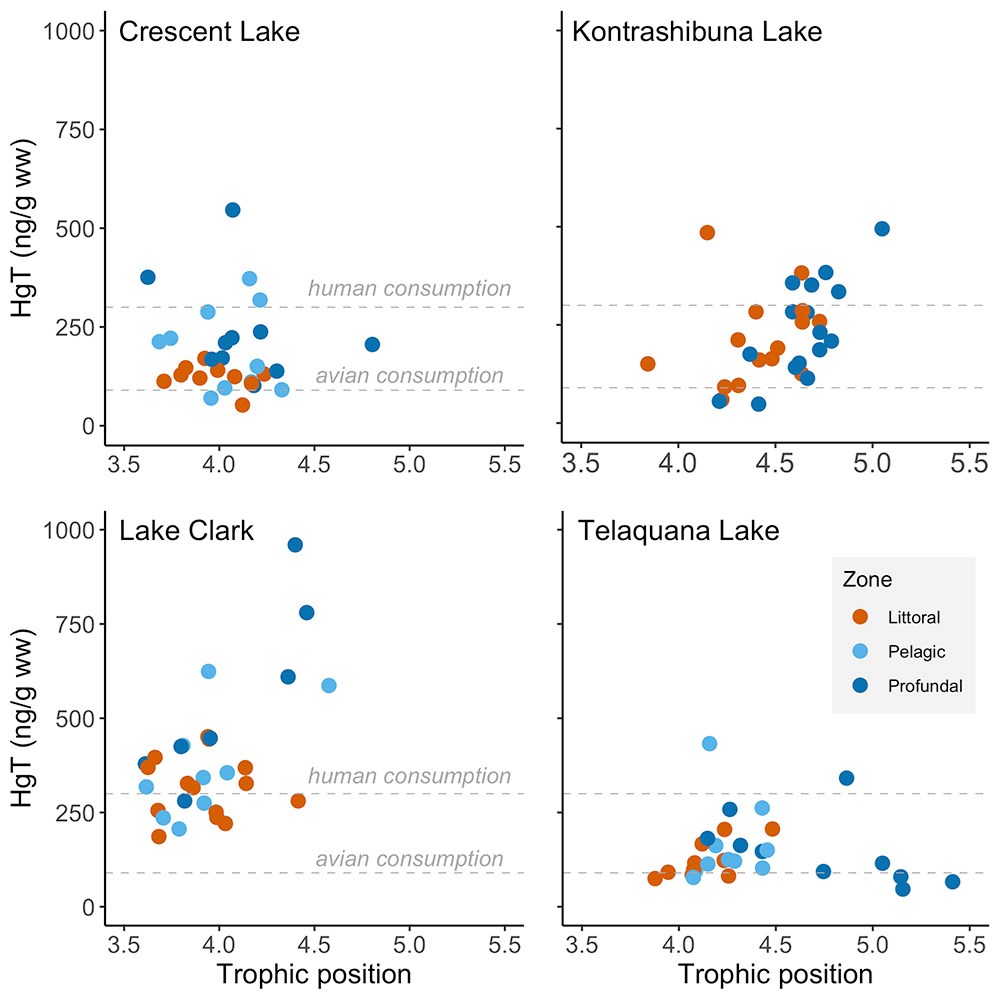Last updated: October 22, 2022
Article
Tracing Mercury through Lake Food Webs

Mercury concentrations measured in resident lake trout (Salvelinus namaycush) at several of Alaska’s national parks exceed ecological and human health benchmarks, indicating a potential contamination risk to consumers. Previous studies identified local sources of mercury to lake fishes in Alaska, but mercury levels in lake trout are highly variable—even within a single lake—warranting further investigation. In 2020 and 2021, biologists from Lake Clark National Park and Preserve sampled lake trout in four lakes within the park to determine how food web structure influences variation in lake trout mercury concentrations. The sampling is part of a multi-park effort conducted with the U.S. Geological Survey in Lake Clark, Wrangell-St. Elias, and Gates of the Arctic national parks and preserves and Noatak National Preserve.

Background
Mercury from natural events (e.g., off-gassing volcanoes) and human activities (e.g., burning coal) enters lake food webs through algae and bacteria, and biomagnifies with each successive prey-to-predator transfer (Figure 1). Generally, older lake trout contain more mercury, but diet and foraging habits influence the tissue concentrations of individual fish. The use of different prey across habitats within a lake may expose fish to more or less mercury. For example, consumption of organisms with relatively low mercury concentrations (e.g., zooplankton or aquatic insects) will transfer less mercury to lake trout, while consumption of organisms with relatively high concentrations (e.g., fish) will transfer more mercury to lake trout.
Findings
Initial findings showed no consistent pattern in mercury contamination across lakes, based on trophic position or habitat zone (Figure 2). In Lake Clark and Crescent Lake, fish captured in the littoral zone had lower mercury concentrations than fish captured in the profundal zone. This was not evident in Kontrashibuna or Telaquana lakes. In Lake Clark and Kontrashibuna Lake, mercury concentrations increased with trophic position, a pattern not seen in Crescent or Telaquana lakes. Factors unique to specific lakes likely play an important role in determining mercury contamination, and subsequent analyses will help determine the importance of diet and age on lake trout mercury levels.

The dashed lines represent previously published impairment benchmarks for human consumption (300 ng/g) and avian consumption (90 ng/g).
Methods
Habitat zones (littoral, pelagic, and profundal) were determined in the field by biologists and capture coordinates were checked against bathymetric maps and satellite imagery. Trophic positions of lake trout were determined using zooplankton as a benchmark for primary consumers (trophic level = 2; Figure 1). These represent preliminary analyses, which are subject to change pending the addition of new data.
